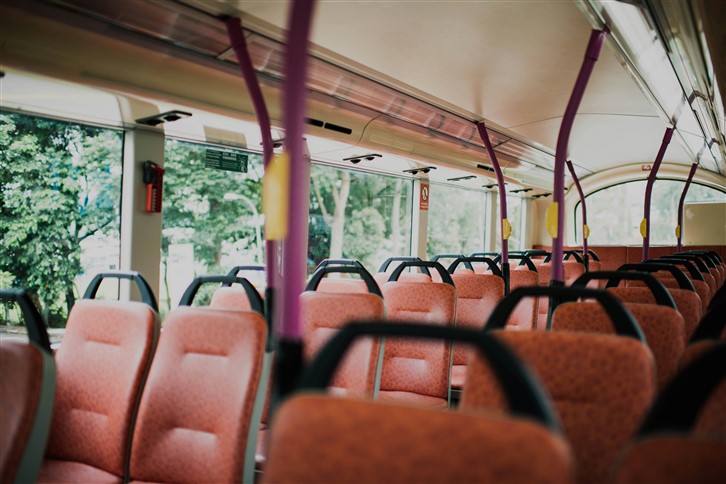To make this new idea work, travellers and providers will have to pool a lot of data. Making it safe and reliable is a big task
The challenges of Mobility-as-a-Service (MaaS) extend beyond the transport system itself and include protection of individuals’ personal data and agreements on the distribution of revenue. For Mobility-as-a-Service (MaaS) to work, it will require considerable sharing of data. This will allow MaaS to build a picture of the totality of the traveller’s requirements and plug into the infrastructure of transport service providers, such as journey planning, booking and information. This will give would-be passengers real-time information relevant to each transport service in a particular journey.
No getting away from data sharing
The dependence of MaaS on data sharing (e.g., for ticketing) means Systems Engineering (SE) is a key factor in creating the conditions where each participant is willing to provide personal data and have confidence in using externally provided data (recognising commercial, privacy and regulatory constraints). Systems Engineering is necessary to guarantee that each participant’s needs regarding data quality, security, and privacy are fully understood and supported. This will be essential for autonomous vehicle services, for example.

Boarding a train. Source: Markus Spiske on Unsplash
The International Organization for Standards (ISO) has published optional guidelines data quality in Intelligent Transport Systems (ITS). The types of data considered include measurements, measurement metadata (source, precision), service availability, service completeness, service grade, timeliness and data veracity. Further work is necessary to advance this work to a full standard. In the meantime, it is incumbent on ITS stakeholders to identify the data quality requirements for each application and to determine how data quality, security and privacy should be regulated for MaaS usage.
The data types that will need to be managed for data exchange in MaaS applications include:
- personal and vehicle location
- network performance and operations
- public transport schedules
- safety and accidents
- passenger flows and volumes
- freight flows
- licensing
- infrastructure
- asset and network
- emissions and environment
- payment and transactions, sentiment data
- works data (including quality of roads, rail, etc.).
Systems Engineering is here to help
Systems Engineering is likely to prove fruitful in developing both the data quality for MaaS applications and the tools necessary for its regulation (for example, data dictionaries and translation tables). Applying a systems approach will provide transparency and confidence that data quality in MaaS meets the needs of MaaS providers, transport service providers, travellers, infrastructure providers and regulators. There is also a role for SE in ensuring MaaS concerns are considered as inputs to the development and enhancement of existing transport networks. This is fundamental to ensuring that the underlying systems are in place to deliver on the MaaS accessibility promise.
Barriers and blockages
There are a number of barriers to overcome in the sharing of data for MaaS applications, including:
- A lack of system-wide awareness of travellers’ needs
- Concerns for safety, data protection and cyber security
- Inability to internalise value of data sharing (particularly where there are internal costs of sharing data and sharing data is perceived as a loss of asset value)
- Organisational cultures that focus on delivery within strict operational boundaries, rather than meeting the transport needs of their customers.
Thinking it through
Mobility as a Service (MaaS) is expected to play a significant part in future transport provision for increased numbers of travellers. It provides opportunities to improve transport efficiency, reduce unnecessary trips, lower energy usage and associated emissions, reduce user costs and improve private and public transport experiences.
There are many challenges to the success of MaaS. The social, commercial, and political barriers between modes need to be overcome to provide seamless travel experiences for users. Systems Engineering is likely to play a part in solving those problems, but the focus of SE influence is likely to be in the operational realm. The challenge is to confidently use widely sourced data in a MaaS environment.

Seats on a bus Source: CHUTTERSNAP on Unsplash
Implications
Effective MaaS data sharing will require data interoperability between different transport providers, with various transport modes, business models, commercial arrangements, technical solutions and operational constraints.
Managing the different data arrangements that currently exist and those that are anticipated in the future will be difficult. Data interoperability standards are likely to emerge, with supporting commercial arrangements focused on the need of the end user rather than the data owner. This will prove challenging, as data agglomeration will drive user value rather than spot data items as at present.
Accommodating a large range and scale of different data points across local, regional and national operators will be a key concern, as will effective gathering and clustering of data. The commercial environment is likely to be a competitive one.
Identifying how to distribute revenue across multiple service providers for individual journeys is another big challenge. Balancing the data agglomeration role against the role of the service provider, and establishing business agreements that are acceptable to all participants, will be difficult.
Finally, it is worth noting that the system integration challenges are not always technical, but can often be political. These might manifest as cultural differences across geographic borders or as politically driven decision making. As MaaS is likely to be required to work internationally, this will pose some interesting technical and commercial challenges.
We can all agree
MaaS acts as a conduit for travellers, operators, data, and services. This requires integration at technical, operational, and commercial levels to succeed. On the technical side, data security concerns and emerging regulations relating to artificial intelligence (AI) and design of interfaces are currently in focus. Commercial agreement is key to determining how all MaaS needs are met. Standards for data and interfaces are likely to be significant in helping Systems Engineering to fit MaaS into a complex regulatory environment.
The Value of Systems Engineering
We have considered numerous examples to demonstrate the value of Systems Engineering and what it can offer.
That value comes from Systems Engineering’s holistic, systematic, more efficient approach to examining and providing solutions to our complex transport needs. By addressing complex and complicated ideas and practices, SE provides a step-by-step approach to understanding our present and future vehicles and infrastructure - it offers a clearer, more nuanced and layered vision of how we can improve the gloal transport system and how to plan better in and for the future.
Share your thoughts!
How far are we from having a system such as Mobility-as-a-Service up and running?
A Mobility-as-a-Service will require huge amounts of data from multiple sources, not only passengers. What barriers can we expect and how can we overcome them?
#thewholesystem